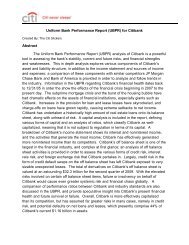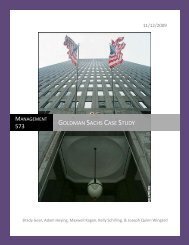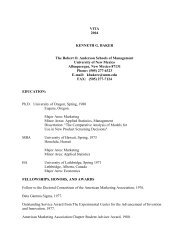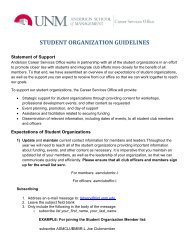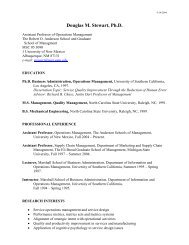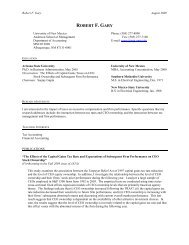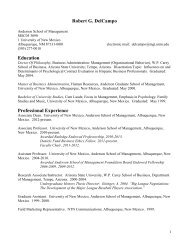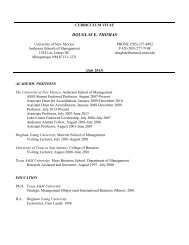Uniform Bank Performance Report - Anderson School of Management
Uniform Bank Performance Report - Anderson School of Management
Uniform Bank Performance Report - Anderson School of Management
You also want an ePaper? Increase the reach of your titles
YUMPU automatically turns print PDFs into web optimized ePapers that Google loves.
The net interest margin (NIM) is an extremely important ratio for a bank. It represents the amount a<br />
bank generates in interest compared to the amount <strong>of</strong> interests paid to its investors. This margin<br />
represents the successfulness <strong>of</strong> a bank’s management to make a pr<strong>of</strong>it by carrying out banking’s most<br />
basic functions, borrowing and lending. It also analyzes a bank’s ability to manage interest rate risk, and<br />
shows insight into the bank’s ability to cover provisions for losses. This ratio is highly dependent on<br />
interest expenses, therefore the lower the interest expenses are in comparison to the amount <strong>of</strong> returns<br />
generated through investments, the more attractive the NIM, and the more efficient its investments are.<br />
JP Morgan’s NIM has been increasing at a constant rate through 2007, 2008, and the second quarter <strong>of</strong><br />
2009. B <strong>of</strong> A shows a very similar NIM to JPMC, while Wells Fargo shows a much higher NIM than both <strong>of</strong><br />
them. The NIM <strong>of</strong> all three banks remains steady over the years indicating successful, but not<br />
outstanding, management <strong>of</strong> interest rates.<br />
CAMELS<br />
CAMELS, is an acronym that stands for the six general categories <strong>of</strong> performance measured under the<br />
<strong>Uniform</strong> Financial Institution Rating System. This is the <strong>of</strong>ficial system used by federal regulators when<br />
assessing the financial condition <strong>of</strong> banks. The categories are: Capital adequacy, Asset quality,<br />
<strong>Management</strong> quality, Earnings, Liquidity, and Sensitivity to market risk. The examination <strong>of</strong> each <strong>of</strong><br />
these categories will provide a good understanding <strong>of</strong> the overall financial condition <strong>of</strong> a bank.<br />
Capital Adequacy<br />
This component looks into the capital <strong>of</strong> a bank, and brings out ratios that tell how well capitalized it is.<br />
The function <strong>of</strong> bank capital is to reduce risk. It does so in three basic ways:<br />
Provides a cushion that allows firms to absorb losses and remain solvent.<br />
Provides ready access to financial markets and thus guards against liquidity problems<br />
caused by deposit outflows.<br />
Constrains growth and limits risk taking.<br />
The Capital Adequacy ratio calculation is: (Tier 1 + Tier 2)/Risk weighted assets.





